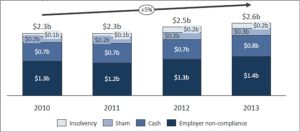Negotiating payment terms in architectural design contracts is a crucial aspect of ensuring a successful and mutually beneficial agreement between architects and clients. By understanding key considerations, factors influencing payment negotiations, and implementing effective strategies, both parties can navigate this process with clarity and confidence.
Key Takeaways
- Understand the scope of work before determining payment terms
- Incorporate milestone payments to track progress and ensure timely payments
- Consider client budget constraints when negotiating payment schedules
- Stay informed about market trends to make informed decisions
- Maintain open communication with the client throughout the negotiation process
Key Considerations for Negotiating Payment Terms
Understanding Scope of Work
Before diving into the numbers, it’s crucial to have a clear understanding of the project’s scope. This includes all tasks, responsibilities, and deliverables expected from both parties. A well-defined scope prevents misunderstandings and sets the stage for fair payment terms.
- Define all project deliverables
- Clarify responsibilities
- Establish project boundaries
Payment terms should directly reflect the scope of work. They must be aligned to ensure that expectations are met and compensation is fair.
Remember, the more detailed your scope, the smoother the negotiation process. It’s not just about the final figure; it’s about agreeing on the value of the work to be done.
Determining Payment Schedule
When it comes to payment schedules, timing is everything. Establish a rhythm that aligns with project phases and cash flow requirements. Consider the following points:
- Initial deposit upon contract signing
- Progress payments at predefined stages
- Final payment upon completion and client satisfaction
Frequency and predictability of payments can significantly reduce financial uncertainty. Ensure that the schedule is clear and agreed upon by both parties to avoid disputes.
Payment schedules should be realistic and reflect the actual progress of work. They must be manageable for the client while ensuring your firm’s financial stability.
Remember, negotiating payment terms with clients is crucial for general contractors. Clear terms, communication, and efficient systems help mitigate delays and ensure timely compensation.
Incorporating Milestone Payments
Milestone payments are pivotal in maintaining a balanced cash flow and incentivizing timely progress. Align milestones with significant project phases to ensure clear objectives for payment release.
Flexibility in setting these milestones allows for adjustments based on project dynamics. Consider the following when defining milestones:
- Project initiation deposit
- Completion of preliminary designs
- Approval of final blueprints
- Construction phase commencements
- Project completion and handover
Milestone payments mitigate financial risk by linking payment to performance. They provide a structured approach to financing, reflecting the true progress of the project.
Factors Influencing Payment Negotiations
Client Budget Constraints
When entering negotiations, it’s essential to recognize that client budget constraints can significantly shape payment terms. A clear understanding of the client’s financial limitations will guide the structuring of a feasible payment plan.
Flexibility is key when accommodating budget constraints. Offering a range of payment options can help in finding a middle ground that respects the client’s budget while ensuring your cash flow needs are met. Consider the following approaches:
- Staggered payments over the project duration
- Reduced upfront costs with back-loaded payment terms
- Discounts for early payments or lump-sum settlements
Ensure that the agreed payment terms are realistic and sustainable for both parties. This will help in maintaining a positive relationship and avoiding future financial disputes.
Remember, the goal is to achieve a balance where contractual obligations are fulfilled without overburdening the client. Regular risk assessment and employing negotiation best practices are crucial in addressing non-payment risks, particularly in service-oriented sectors like plumbing, electrical, and landscape construction.
Project Complexity
The intricacies of an architectural project can significantly impact payment terms. Complex designs demand more resources, both in time and materials, which should be reflected in the contract. Custom home building, for instance, often entails unique challenges that must be addressed.
Complexity scales with the size and novelty of the project. A straightforward office building differs vastly from a bespoke art museum in terms of required expertise and risk management. Payment terms must be tailored to these variables to ensure fair compensation for all parties involved.
- Risk assessment
- Expertise required
- Resource allocation
Payment terms should evolve in tandem with project complexity to mitigate financial risks.
Understanding the relationship between project complexity and payment expectations is essential. It allows for the creation of a dynamic payment structure that adapts to the project’s demands, ensuring a smoother financial workflow and addressing non-payment challenges.
Market Trends
In the dynamic landscape of architectural design, market trends play a pivotal role in shaping payment terms. The prevailing economic conditions, such as interest rates and investment flows, can influence clients’ willingness to commit to certain financial arrangements. It’s essential to stay informed and adapt to these trends to maintain a competitive edge.
Flexibility in adjusting payment terms can be a significant advantage when dealing with market fluctuations. For instance, during a market downturn, offering extended payment periods might attract clients who are experiencing budget constraints.
Define payment terms clearly, provide regular progress updates, and resolve disputes amicably to ensure timely payments and successful project collaborations.
Understanding the market also involves recognizing the value of your services in relation to competitors. A well-positioned payment structure that reflects the quality and uniqueness of your design services can justify higher rates, even in a competitive market.
Strategies for Successful Payment Negotiations
Open Communication with Client
Maintaining open lines of communication is paramount in negotiating payment terms. It’s essential to discuss expectations and concerns upfront to avoid misunderstandings later on.
- Establish clear communication channels
- Set regular check-ins to discuss project progress and payment updates
- Be transparent about your payment needs and constraints
Ensure that both parties are on the same page regarding payment terms to prevent disputes.
Addressing non-payment in custom home building projects and collecting unsettled debts in landscape construction services are crucial for project success. Effective strategies and legal recourse options are discussed.
Flexibility in Payment Options
Offering a range of payment options can be a game-changer in finalizing architectural design contracts. Clients appreciate the ability to choose a method that aligns with their financial planning. Whether it’s a traditional lump-sum, phased payments, or a more creative structure, flexibility can lead to a win-win situation.
Options may include:
- Upfront deposits with balance upon completion
- Monthly or quarterly invoicing
- Performance-based payments tied to milestones
Ensuring that the payment structure is clear and agreed upon from the outset can prevent misunderstandings and foster a positive working relationship.
Small construction firms should seek legal counsel for payment disputes when negotiations fail, payment delays persist, or legal action is needed. Strategies include negotiating payment terms, diversifying client base, and utilizing legal remedies.
Seeking Legal Advice if Necessary
When negotiations reach a standstill, legal advice may be your ally. Lawyers can provide clarity on contractual obligations and help you understand the legal framework within which you can operate.
- Review contract drafts with a legal expert.
- Ensure all agreements are legally binding and enforceable.
- Protect your rights and interests proactively.
Transparency in financial dealings is key. Negotiate amicable agreements with clients. Use legal recourse as a last resort. Consider mediation and arbitration for resolution.
Remember, the goal is to forge a partnership that benefits both parties. Legal intervention should support, not undermine, this objective.
Navigating the complexities of payment negotiations can be daunting, but with the right strategies, your construction company can secure the financial stability it deserves. Our guide, ‘Strategies for Successful Payment Negotiations,’ offers invaluable insights and actionable tips to enhance your debt recovery efforts. Don’t let overdue payments hinder your business growth. Visit our website now to learn more and take advantage of our expert debt collection services tailored specifically for the construction industry. Together, we can construct a solid financial future for your company.
Frequently Asked Questions
What is the typical payment schedule for architectural design contracts?
The typical payment schedule for architectural design contracts includes an initial deposit, milestone payments, and a final payment upon completion of the project.
How can architects ensure timely payments from clients?
Architects can ensure timely payments by clearly outlining payment terms in the contract, setting up automated payment reminders, and maintaining open communication with the client.
What are milestone payments and why are they important in architectural contracts?
Milestone payments are specific payments made at key stages of the project, such as completion of design phase or approval of construction documents. They are important as they help maintain cash flow for the architect throughout the project.
Can payment terms be renegotiated during the course of a project?
Payment terms can be renegotiated during the course of a project if both parties agree to the changes. It is important to document any modifications to the payment terms in writing.
What should architects do if clients fail to make payments on time?
If clients fail to make payments on time, architects should follow up with reminders, assess late fees if specified in the contract, and consider legal action as a last resort.
Are there any industry standards for payment terms in architectural design contracts?
While there are no strict industry standards, common practices include a percentage of the total fee as an initial deposit, milestone payments tied to project progress, and a final payment upon completion.





